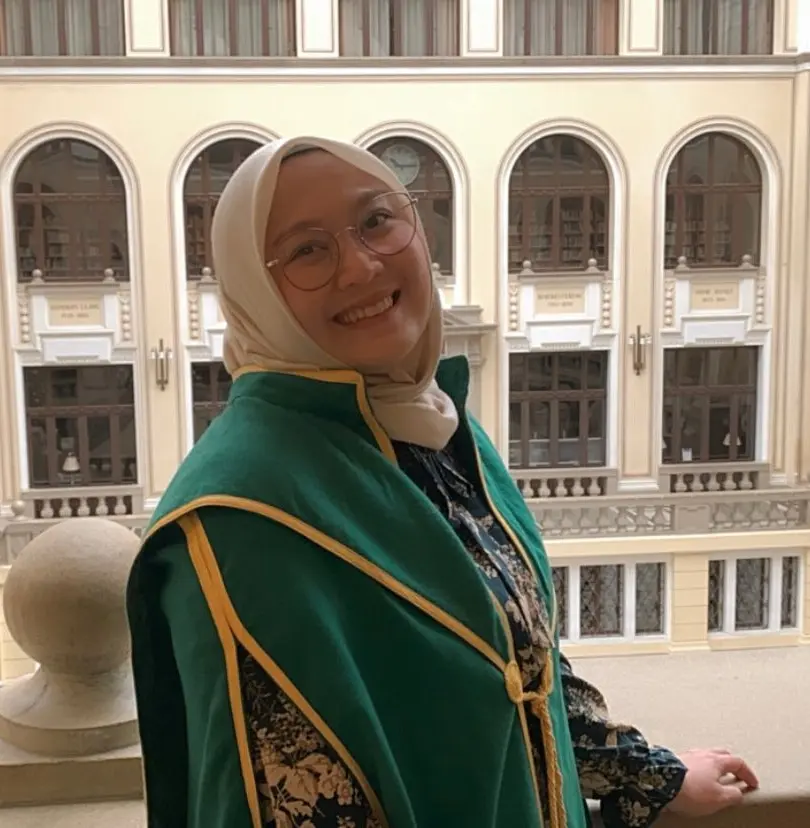László Fésüs
 The research teams of the Laboratory of Cell Biochemistry has a strong track record in investigating biochemical features which determine cell fates and functions of differentiated cells. We have revealed critical molecular mechanisms in various cell death forms, such as apoptosis (billions of cells die daily by apoptosis in the human body), netosis, necroptosis and autophagic cell death, in the effectiveness of phagocytosis of the dying cells and the induction or suppression of inflammatory response to cell death. Important steps have been identified in the differentiation process of myeloid cells by studying promyelocytic cells responding to retinoic acid. New elements of thermogenesis regulation of human brown and beige adipocytes (thermogenic adipose tissue amounts up to 1.5% of total body mass in adult humans and can burn several kilograms of fat yearly by converting energy sources to heat in mitochondria) have been revealed and further investigated using primary cell cultures, single cell and gene expression analysis with the aim to find new ways in fighting obesity.
The research teams of the Laboratory of Cell Biochemistry has a strong track record in investigating biochemical features which determine cell fates and functions of differentiated cells. We have revealed critical molecular mechanisms in various cell death forms, such as apoptosis (billions of cells die daily by apoptosis in the human body), netosis, necroptosis and autophagic cell death, in the effectiveness of phagocytosis of the dying cells and the induction or suppression of inflammatory response to cell death. Important steps have been identified in the differentiation process of myeloid cells by studying promyelocytic cells responding to retinoic acid. New elements of thermogenesis regulation of human brown and beige adipocytes (thermogenic adipose tissue amounts up to 1.5% of total body mass in adult humans and can burn several kilograms of fat yearly by converting energy sources to heat in mitochondria) have been revealed and further investigated using primary cell cultures, single cell and gene expression analysis with the aim to find new ways in fighting obesity.
It has been one of the central elements of our biochemical approaches to understand the regulation, functions and pathologic roles of transglutaminases (humans have 7 catalytically active transglutaminases including blood coagulation factor 13A), particularly tissue transglutaminase (TG2). TG2 is a Ca2+-dependent multifunctional enzyme which can crosslink proteins (through glutamine and lysine residues), deamidate protein glutamines, serve as a G protein, interact with intra- and extracellular components, appear in various cell compartments and may initiate tissue fibrosis, neurodegeneration and coeliac disease. During the years we have clarified important structural and enzymatic features of TG2, described its epitopes recognized by coeliac antibodies, found constrain on its evolution in humans, revealed its importance in apoptosis and still aim to understand its general importance in basic cellular processes.
For details see our published articles at: https://m2.mtmt.hu/gui2/?type=authors&mode=browse&sel=authors10000986&paging=2;20
Selected recent publications:
Kanchan K, Fuxreiter M, Fésüs L.(2015) Physiological, pathological, and structural implications of non-enzymatic protein-protein interactions of the multifunctional human transglutaminase 2. Cell Mol Life Sci 72: 3009-3035.
Arianti R, Vinnai BÁ, Tóth BB, Shaw A, Csősz É, Vámos A, Győry F, Fischer-Posovszky P, Wabitsch M, Kristóf E, Fésüs L. (2021) ASC-1 transporter-dependent amino acid uptake is required for the efficient thermogenic response of human adipocytes to adrenergic stimulation. FEBS Letts 595:2085-2098.
Zoltán Balajthy
 We investigate the fundamental mechanisms of all-trans-retinoic acid (ATRA)-induced differentiation of acute promyelocytic leukaemia (APL) NB4 cells and promyelocytic cells from the blood of APL patients in vitro and in vivo. ATRA-induced atypical TG2 expression promotes increased differentiation, cell survival, and intense cytokine storm through NF-κB signalling pathways. Atypically expressed TG2 often contributes to the severity of other diseases, such as various types of cancer, leukaemia, neurodegenerative diseases, or the development of differentiation syndrome in APL. We have proposed a possible solution to the latter problem, which is under publication. According to our latest published results, TG2 functions as a signalling platform that brings CD18, c-SRC, PI3K, p85, AKT, and mTOR proteins into close proximity in protein-protein interactions. We are currently investigating the proteins with which TG2 can interact in the cell nucleus using CHIP-seq, mRNA-seq, ATAC-seq, and proteomic tools.
We investigate the fundamental mechanisms of all-trans-retinoic acid (ATRA)-induced differentiation of acute promyelocytic leukaemia (APL) NB4 cells and promyelocytic cells from the blood of APL patients in vitro and in vivo. ATRA-induced atypical TG2 expression promotes increased differentiation, cell survival, and intense cytokine storm through NF-κB signalling pathways. Atypically expressed TG2 often contributes to the severity of other diseases, such as various types of cancer, leukaemia, neurodegenerative diseases, or the development of differentiation syndrome in APL. We have proposed a possible solution to the latter problem, which is under publication. According to our latest published results, TG2 functions as a signalling platform that brings CD18, c-SRC, PI3K, p85, AKT, and mTOR proteins into close proximity in protein-protein interactions. We are currently investigating the proteins with which TG2 can interact in the cell nucleus using CHIP-seq, mRNA-seq, ATAC-seq, and proteomic tools.
Recent publications:
Jambrovics, K., Botó, P., Pap, A., Sarang, Z., Kolostyák, Z., Czimmerer, Z., Szatmári, I., Fésüs, L., Uray, I., Balajthy, Z.: Transglutaminase 2 associated with PI3K and PTEN in a membrane-bound signalosome platform blunts cell death. Cell Death Dis. 14 (3), 1-10, 2023.
Jambrovics, K., Póliska, S., Scholtz, B., Uray, I., Balajthy, Z.: ATO Increases ROS Production and Apoptosis of Cells by Enhancing Calpain-Mediated Degradation of the Cancer Survival Protein TG2. Int. J. Mol. Sci. 24 (13), 1-11, 20
Károly Jambrovics, Wedean Al-Hadban, Anett Mázló, István Szatmari, Boglárka Dobó, Gyula Reményi, Ádám Jóna, Gábor Koncz, Zoltán Balajthy. Anti-inflammatory 25(OH)D3, a natural steroid hormone, may complement all-trans retinoic acid therapy for differentiation syndrome in acute promyelocytic leukemia, (manuscript under revision, Cell Death & Disease, CDDIS-24-6404 R).
Róbert Király
 Our work significantly contributed to revealing the Ca2+-binding sites of transglutaminase 2 and the epitopes of TG2 which are recognized by the antibodies which appear in coeliac disease patients. In recent years we have studied the still barely characterized isopeptidase activity of transglutaminase 2 and F13A due to potential therapeutic possibilities in reversing fibrosis, thrombosis and neurodegenerative diseases.
Our work significantly contributed to revealing the Ca2+-binding sites of transglutaminase 2 and the epitopes of TG2 which are recognized by the antibodies which appear in coeliac disease patients. In recent years we have studied the still barely characterized isopeptidase activity of transglutaminase 2 and F13A due to potential therapeutic possibilities in reversing fibrosis, thrombosis and neurodegenerative diseases.
We also performed the biochemical characterisation of human TG4, which could contribute to the high invasiveness of prostate cancer. Our current primary focus is the description of the TG2 interactome in endothelial cells (where TG2 is highly expressed but its role in this cell type is not known) using a recently developed human umbilical vein endothelial cell (HUVEC) model, which could also help the description of celiac cell phenotype.
Recently, we have revealed the novel RNA-binding ability of TG2 and some other transglutaminases, which can open a new chapter in the field of transglutaminase research.
Selected recent publications:
Csaholczi B, Csuth AR, Korponay-Szabó IR, Fésüs L, Király R. Transglutaminase 2 is an RNA-binding protein: experimental verification and characterisation of a novel transglutaminase feature. FEBS J. 2025;292(4):915-928. doi:10.1111/febs.17373
Csobán-Szabó Z, Bécsi B, El Alaoui S, Fésüs L, Korponay-Szabó IR, Király R. (2021) Biochemical Characterisation of Human Transglutaminase 4. Int J Mol Sci. 22:12448.
Csobán-Szabó Z, Fésüs L, Király R. (2020) Protein-peptide based assay for the characterization of human blood coagulation factor XIII-A isopeptidase activity. Anal Biochem. 600:113699.
Csobán-Szabó Zsuzsa, Király Róbert, Csaholczi Bianka PhD hallgató

Rini Arianti
 Brown/beige adipocytes are mitochondria-rich cells, which can dissipate energy in the form of heat. The heat production of these thermogenic cells is mediated by the activity of uncoupling protein 1 (UCP1). The thermogenic activity of brown/beige adipocytes is potently activated by cold, which stimulates the uptake of metabolic substrates such as glucose, fatty acid, amino acids (AA), as well as micronutrients including vitamins and minerals.
Brown/beige adipocytes are mitochondria-rich cells, which can dissipate energy in the form of heat. The heat production of these thermogenic cells is mediated by the activity of uncoupling protein 1 (UCP1). The thermogenic activity of brown/beige adipocytes is potently activated by cold, which stimulates the uptake of metabolic substrates such as glucose, fatty acid, amino acids (AA), as well as micronutrients including vitamins and minerals.
We previously reported that adrenergic stimulation induced the expression of thiamine transporters in human adipocytes and the inhibition of thiamine transporters led to the reduced thermogenesis. Our global transcriptomic analysis showed that the expression of AA transporters was also induced by adrenergic stimulation.
We are currently investigating the importance of AA transporters in thermogenic activation of human adipocytes (project funded by NKFIH PD146202).
Selected recent publications:
Arianti, R., Vinnai, B. Á., Győry, F., Guba, A., Csősz, É., Kristóf, E., & Fésüs, L. (2023). Availability of abundant thiamine determines efficiency of thermogenic activation in human neck area derived adipocytes. The Journal of nutritional biochemistry, 119, 109385. https://doi.org/10.1016/j.jnutbio.2023.109385
Arianti, R., Vinnai, B. Á., Alrifai, R., Karadsheh, G., Al-Khafaji, Y. Q., Póliska, S., Győry, F., Fésüs, L., & Kristóf, E. (2024). Upregulation of inhibitor of DNA binding 1 and 3 is important for efficient thermogenic response in human adipocytes. Scientific reports, 14(1), 28272. https://doi.org/10.1038/s41598-024-79634-2
PhD students
András Mádi
 We investigate the role of transglutaminase 2 in the functions of white adipose tissue of mice. We are interested in how this tissue type can support mice under the various stressful conditions in the absence of the enzyme.
We investigate the role of transglutaminase 2 in the functions of white adipose tissue of mice. We are interested in how this tissue type can support mice under the various stressful conditions in the absence of the enzyme.
The studies include the artificial activation of adrenergic signaling pathways in animals using specific agonists. In addition, we study the browning process during which heat-producing, so-called “beige” cells are activated in this tissue by cold exposure.
Selected recent publications:
Lénárt K, Pap A, Pórszász R, V Oláh A, Fésüs L, Mádi A. (2020) Transglutaminase 2 Has Metabolic and Vascular Regulatory Functions Revealed by In Vivo Activation of Alpha1-Adrenergic Receptor. Int J Mol Sci. 29:3865.
Mádi A, Cuaranta-Monroy I, Lénárt K, Pap A, Mezei ZA, Kristóf E, Oláh A, Vámosi G, Bacsó Z, Bai P, Fésüs L (2017) Browning deficiency and low mobilization of fatty acids in gonadal white adipose tissue leads to decreased cold-tolerance of transglutaminase 2 knock-out mice. Biochim Biophys Acta Mol Cell Biol Lipids. 1862:1575-1586.
Former member:
Endre Kristóf
 Primarily, we aim to identify the unique molecular regulators of brown differentiation of human adipose-derived stromal cells and thermogenesis of the differentiated adipocytes obtained from adipose tissues of distinct anatomical origins by analyzing the global gene expression pattern of these cells. To prove that the identified molecular elements directly regulate brown/beige differentiation and/or activation, the specific genes will be deleted or overexpressed.
Primarily, we aim to identify the unique molecular regulators of brown differentiation of human adipose-derived stromal cells and thermogenesis of the differentiated adipocytes obtained from adipose tissues of distinct anatomical origins by analyzing the global gene expression pattern of these cells. To prove that the identified molecular elements directly regulate brown/beige differentiation and/or activation, the specific genes will be deleted or overexpressed.
Based on the obtained gene expression data, we wish to determine the secreted cytokine and metabolite profiles of distinct human thermogenic adipose tissues and adipocytes by system biology approaches. We also intend to systematically investigate how human browning adipocytes switch off their thermogenic capacity and become dormant in response to the withdrawal of browning-inducers. Our research might open up better strategies for specific stimulation of beneficial fat browning or preventing entry of potential brown adipocytes into dormancy in humans, which aid weight reduction and decrease insulin resistance in obese individuals.
Selected recent publications:
Kristóf E., Doan-Xuan Q. M., Bai P., Bacso Z., Fésüs L.(2015) Laser-scanning cytometry can quantify human adipocyte browning and proves effectiveness of irisin. Scientific Reports 5:12540.
Shaw A., Tóth B.B., Király R., Arianti R., Csomós I., Póliska S., Vámos A., Korponay-Szabó I.R., Bacso Z., Győry F., Fésüs L., Kristóf E. (2021) Irisin stimulates the release of CXCL1 from differentiating human subcutaneous and deep-neck derived adipocytes via upregulation of NFκB pathway. Front Cell Dev Biol 9:737872